Food recovery begins with understanding where to find discarded but still edible food – from retail dumpsters, restaurants, farms, and public foraging areas. Start with proper safety gear including gloves and flashlights, and familiarize yourself with laws like the Good Samaritan Food Donation Act. Always inspect for quality by checking appearance, smell, and packaging integrity. Properly clean, process, and store your finds in airtight containers. This practical approach transforms waste into nourishment while building sustainable community networks.
Beginner's Complete Guide To Recovering Discarded Food
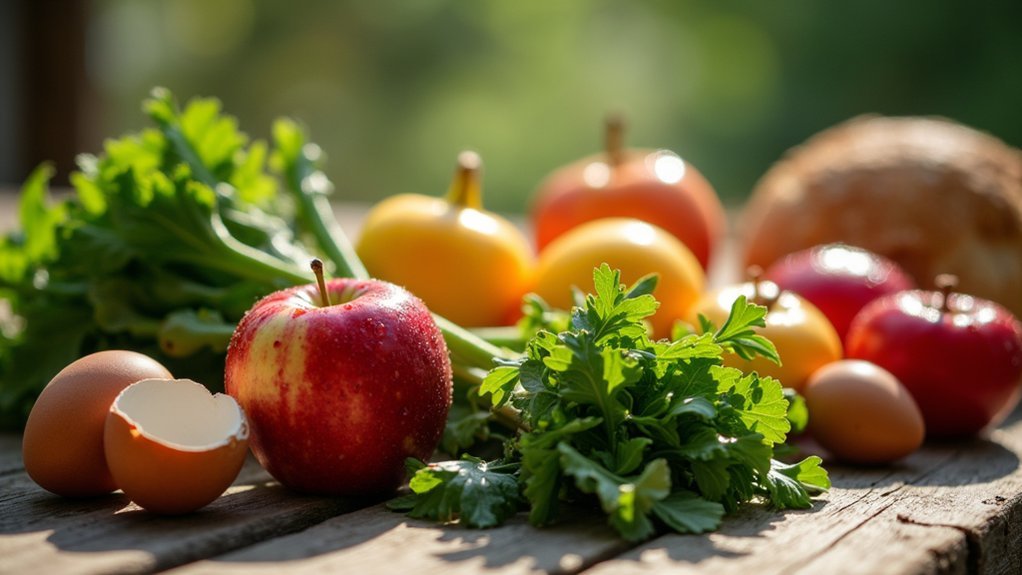
When you first consider recovering discarded food, the process might seem overwhelming.
Start small by creating a meal plan to purchase only what you'll actually use and properly store fruits and vegetables to extend freshness.
The foundation of food recovery starts at home—thoughtful purchasing and proper storage prevent waste before it begins.
Track your inventory regularly and log what you throw away to identify waste patterns. This information helps implement just-in-time ordering to reduce spoilage.
For food you can't use immediately, explore creative repurposing options. Transform aging ingredients into new dishes or connect with food rescue platforms to donate surplus items.
Composting food scraps creates nutrient-rich fertilizer instead of contributing to landfill waste.
Consider joining community programs that promote food recovery or using apps designed to inspire creative uses for food typically discarded.
Understanding Food Waste: Facts and Figures
You'll be stunned to learn that Americans waste nearly 60 million tons of food annually, representing a staggering 40% of the total U.S. food supply.
This massive waste occurs across multiple sectors, with 66 million tons generated just in food retail, service, and residential areas in 2019. When food waste decomposes in landfills, it produces methane gas, significantly contributing to climate change.
The economic impact is equally alarming, with the value of discarded food estimated at $218 billion, while millions of Americans simultaneously experience food insecurity.
Shocking Food Waste Statistics
The staggering scale of food waste presents one of our generation's most overlooked environmental crises.
You're living in a world where 40% of all U.S. food is wasted—nearly 60 million tons annually. Globally, that's 1.3 billion tonnes of food discarded each year.
If food waste were a country, it would rank as the third largest greenhouse gas emitter, generating 3.3 billion tons of CO2 annually. When this waste decomposes in landfills, it produces methane gas, a greenhouse gas 25 times more potent than carbon dioxide.
Meanwhile, 35 million Americans face food insecurity.
The economic toll is equally alarming: $161 billion lost yearly in the U.S. alone.
Most wasted food (60%) ends up in landfills, with only 4.99% composted.
Over 80% of consumers discard perfectly good food due to misinterpreted expiration labels.
Your purchasing habits matter—overbuying and impulse shopping directly contribute to this massive problem.
Sources of Food Waste
Despite our growing awareness of sustainability, food waste continues to infiltrate every stage of our supply chain from farm to table. At the production level, crops are often discarded due to weather damage, pest infestations, or market fluctuations.
In retail environments, you'll find waste stemming from overstocked shelves and the rejection of "imperfect" produce that doesn't meet aesthetic standards. Your own household likely contributes through misinterpreted expiration dates, overbuying, and poor storage practices.
Restaurants generate significant plate waste through oversized portions, while binary shopping choices (like bulk purchases) can leave you with more food than you'll consume. In foodservice settings, approximately 70% of waste comes directly from customers' uneaten portions.
Understanding these sources is essential because globally, one-third of all food produced ends up wasted, creating unnecessary greenhouse gas emissions and squandering the water and energy used in production.
Economic Impact Assessment
When tallied globally, food waste creates a staggering economic burden of approximately $940 billion annually, representing 1.3 billion tons of discarded food that never reaches a plate.
In the United States alone, food waste accounts for $161 billion in losses yearly, with about 40% of food going uneaten.
You'll find reducing waste creates substantial savings opportunities. Cutting food waste by just 20-50% could save $120-300 billion globally each year.
For businesses, food waste reduction strategies deliver impressive returns—up to 14:1 on investment.
Beyond direct product costs, food waste encompasses wasted resources throughout the supply chain: water, energy, labor, and transportation. The average household wastes approximately 74kg per capita annually, adding significant pressure to already strained economic systems.
Legal Considerations Before Your First Recovery Mission
Before commencing your first food recovery mission, understanding the legal landscape will protect you and maximize your impact. The Bill Emerson Good Samaritan Food Donation Act offers essential legal protection, but only when you follow proper protocols.
Navigating food donation laws isn't just about good intentions—it's about knowing how to turn your compassion into protected action.
For maximum legal protection:
- Partner with nonprofits – Donate only to recognized nonprofit organizations, as direct donations to individuals aren't protected under federal law.
- Ensure food safety – All donations must meet federal, state, and local quality standards to qualify for liability protection.
- Document everything – Maintain records of what you donate, when, and to whom for tax benefits and potential liability issues.
- Act in good faith – Liability protection doesn't cover gross negligence or intentional misconduct when handling food donations.
Organizations such as Food Rescue US can offer valuable support to ensure your donations are properly redistributed while maintaining the legal protections afforded by the Act.
Essential Safety Equipment for Urban Food Foraging

Before setting out on your urban food recovery mission, you'll need protective gloves and eyewear to shield yourself from potential hazards in dumpsters or other collection sites.
Bring clean, sealable storage containers that can safely transport recovered food without cross-contamination or spillage. Consider using mesh bags for ventilation when collecting fruits or vegetables that need to breathe.
Location scouting tools like a flashlight, smartphone with mapping capabilities, and perhaps a small notebook will help you track promising recovery spots while avoiding dangerous or illegal areas.
Protective Gloves and Eyewear
Safety equipment plays an important role in urban food foraging, with protective gloves and eyewear standing as essential gear for any serious forager.
When selecting gloves, consider materials that balance protection against thorns and irritants while maintaining dexterity. Your eyewear should shield against debris, branches, and potential chemical exposure during your urban expeditions. Proper equipment is crucial since wrong plants can cause serious illness or even death if mishandled.
For ideal protection while recovering discarded food, follow these guidelines:
- Choose gloves appropriate for the climate—breathable for warm weather, insulated for cold.
- Invest in eyewear that provides side protection against flying debris and low-hanging branches.
- Always wear gloves when handling unknown plants that may cause skin irritation.
- Consider specialized equipment when foraging near industrial areas or handling mushrooms.
Don't underestimate proper gear—it's your first defense against environmental hazards while urban foraging.
Storage Containers
Four critical elements define effective storage containers for urban food foraging, with proper containment being your primary defense against contamination and spoilage.
You'll need airtight seals to maintain freshness and prevent pest infiltration during transport and storage.
Glass containers work best for acidic foods and don't retain odors, while BPA-free plastic offers versatility for wet items. Consider preparing glass jars through dry canning methods for longer-term storage of salvaged dry goods.
For long-term preservation, consider Mylar bags with oxygen absorbers—they're lightweight and can be heat-sealed to maximize shelf life.
Always thoroughly clean and sanitize containers before use, and implement a labeling system to track dates and contents.
Store your recovered food in cool, dark places whenever possible.
Stackable options from brands like Rubbermaid or IKEA will help maximize limited storage space in urban environments.
Location Scouting Tools
While proper storage safeguards your recovered food, successful urban foraging begins with effective location scouting and safety preparation.
Finding productive locations requires both knowledge and the right tools.
Essential scouting tools for your urban foraging adventures:
- Maps and Apps – Use resources like FallingFruit.org to locate public foraging areas, while apps like PlantSnap can help with on-the-spot identification.
- Field Guides – Keep thorough guides handy for accurate plant and mushroom identification.
- Binoculars – Spot potential food sources from a distance without disturbing the environment.
- Spotting Logs – Maintain records of successful locations, noting seasonal availability and yields. Implementing trend analysis techniques can help you predict seasonal patterns for optimal foraging times.
Don't forget your smartphone for taking photos of unfamiliar plants for later research or sharing with experienced foragers for identification help.
How to Identify Quality Discarded Food
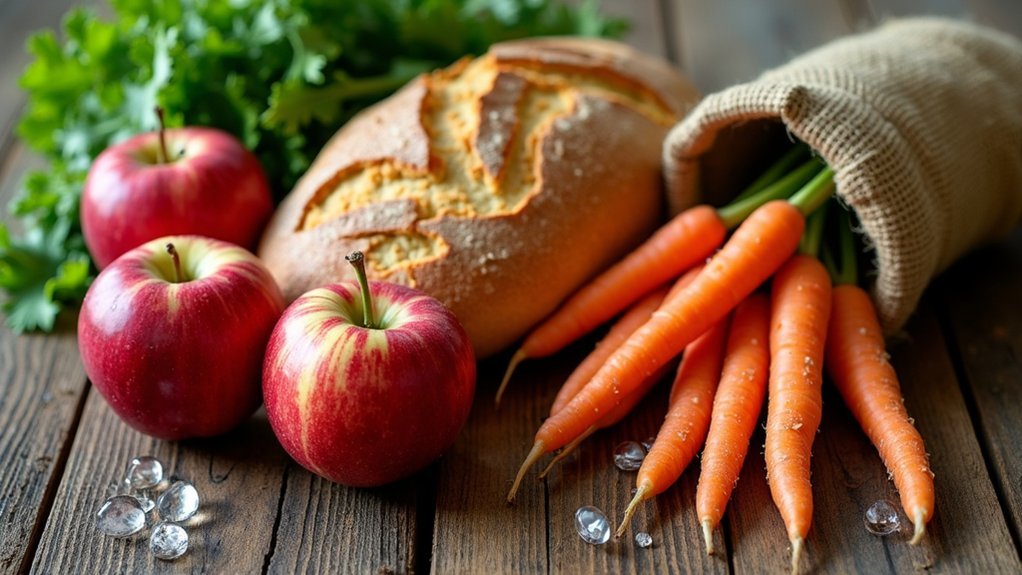
When approaching discarded food, you'll need reliable methods to determine what's still safe and nutritious versus what should remain in the bin.
Start with a thorough visual inspection—look for mold, unusual discoloration, or damaged packaging.
Trust your nose; off-putting odors indicate spoilage. Check expiration dates when available, but remember they're often conservative estimates. Many perfectly good items are discarded for cosmetic reasons like misshapen produce or dented packaging.
For technological assistance, smartphone apps can help identify safe foods while portable spectrometry tools offer more sophisticated analysis. Remember that what many retailers discard as ugly food is actually perfectly good quality and completely fit for human consumption.
Consider why items were discarded—overstocking often yields pristine food, while improper storage might compromise safety.
Always prioritize proper handling during recovery to maintain nutritional value and prevent contamination.
When in doubt, err on the side of caution.
Best Locations and Times for Successful Recovery
Finding the best locations and times for food recovery dramatically increases your chances of success.
Target grocery stores, restaurants, farmers markets, and bakeries where food is regularly discarded due to cosmetic imperfections or approaching expiration dates.
For ideal timing:
- Evening closing hours – Restaurants and cafes often discard unsold prepared food at the end of business days.
- End of market days – Farmers markets typically have significant surplus produce during final hours.
- Early morning bakery visits – Bakeries frequently dispose of previous day's unsold items.
- Post-holiday periods – Retailers clear seasonal items and overstocked goods after major holidays.
Urban areas with strong food recovery networks like San Francisco and university towns often yield better results due to established sustainability initiatives. Organizations like Copia in San Francisco connect food donors with recipients through algorithm-based apps to maximize recovery efficiency.
Building Relationships With Local Businesses
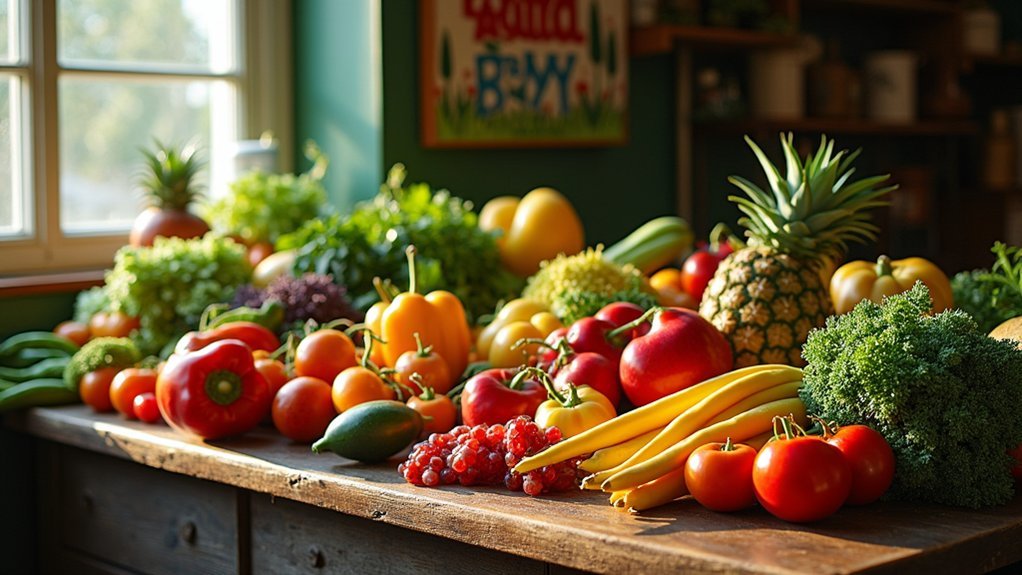
To build strong relationships with local businesses for food recovery, you'll need to identify and connect with decision-makers who can authorize donations.
Establish clear, consistent communication channels through which businesses can easily notify you about available food and coordinate pickup times.
You can strengthen these relationships by maintaining professional interactions, expressing appreciation for their contributions, and providing feedback about how their donated food benefits the community. Help businesses overcome key barriers to food donation by offering solutions and support, as environmental professionals do in successful recovery programs.
Finding Key Contacts
Why do successful food recovery initiatives depend so heavily on relationship building?
Simply put, food recovery is a collaborative effort requiring connections with those who've surplus food and those who can distribute it to people in need.
To establish these essential connections:
- Research local organizations – Identify food banks, soup kitchens, and community pantries in your area that already have distribution systems in place.
- Attend networking events – Local trade shows and community workshops are perfect opportunities to meet potential partners face-to-face.
- Leverage social media – Connect with businesses and organizations online to build preliminary relationships and arrange meetings.
- Implement regular communication – Set up recurring check-ins with partners to maintain relationships and optimize your donation process. Remember that wholesalers who donate their excess produce can receive tax deductions for their contributions, which can be a compelling incentive to mention.
Clear Communication Channels
Establishing reliable communication channels with local businesses forms the foundation of any successful food recovery initiative. You'll need to create consistent ways to connect that respect business operations while making donation processes straightforward.
Set up regular check-ins via email, phone, or a dedicated app to maintain relationships and address any concerns promptly. Digital platforms can streamline this process, allowing businesses to notify you of available surplus in real-time while tracking donation history.
When communicating with businesses, be transparent about your handling procedures and share success stories that highlight the positive impact of their contributions. Just as the Food Recovery Network utilizes a content marketing flywheel to maximize reach, your initiative should develop a system to share impact stories that encourage continued participation.
Remember that understanding their operational constraints is essential—adapt your communication style and frequency to fit their needs, not yours. This approach builds trust and guarantees long-term partnership success.
Cleaning and Processing Your Recovered Food
Properly cleaning and processing recovered food stands as the critical step between finding discarded items and safely consuming them.
You'll need to thoroughly clean not just the food but all surfaces it touches. Start by wearing gloves and appropriate protective gear to minimize contamination risks. Drawing inspiration from digital archives like the Portal to Texas History, documenting your food recovery practices can help build community knowledge.
- Sort carefully – Separate edible portions from spoiled sections, checking for signs of sliminess or unusual odors.
- Clean thoroughly – Wash with soap and water first, then use appropriate sanitizing solutions (50-100 ppm bleach for most surfaces).
- Cook adequately – Heat foods to at least 165°F (74°C) to kill potential pathogens.
- Prevent cross-contamination – Use separate utensils for raw and cooked items, and maintain proper food temperature control.
Always wash your hands thoroughly before and after handling recovered food.
Storage Solutions for Salvaged Food Items
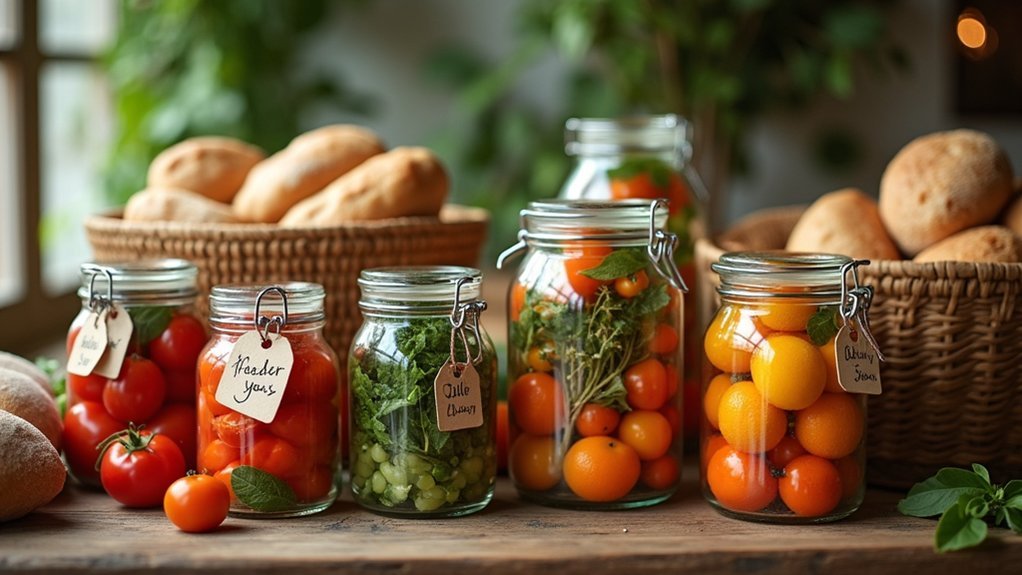
Once you've cleaned and processed your recovered food items, effective storage becomes essential for preserving their quality and extending their usable life.
Store your salvaged foods in dry, cool (40-72°F), dark areas to maintain nutritional value.
Proper storage conditions: cool, dark, and dry environments safeguard the nutrients in your recovered food supplies.
For peak preservation, use airtight containers like glass jars or Mylar bags to prevent moisture and pest damage.
Food-grade plastic buckets lined with Mylar bags offer excellent protection for larger quantities of dry goods.
Incorporate preservation methods like oxygen absorbers for grains and beans or dehydrating items when appropriate.
Always label containers with recovery and processing dates to help you maintain a rotation system.
Keep your storage organized by placing frequently used items in accessible locations and storing everything off the floor to minimize moisture exposure.
Remember to include a variety of salvaged foods to ensure nutritious eating during emergency situations.
Regularly inspect your stored foods for any signs of spoilage.
Recipes and Meal Planning With Recovered Ingredients
Transforming your salvaged food items into delicious meals requires creativity and strategic planning. By maintaining an ingredient inventory and categorizing recovered foods, you'll easily spot opportunities for zero-waste cooking.
Turn your rescued items into satisfying meals through these approaches:
- Create "fridge-raid" meals – Combine recovered vegetables, proteins, and grains into fried rice, breakfast hash, or hearty burritos.
- Repurpose staple items – Transform stale bread into croutons, leftover rice into porridge pancakes, or aging vegetables into soups.
- Adapt recipes flexibly – Substitute ingredients based on what you've recovered to avoid unnecessary purchases.
- Cook in bulk strategically – Prepare larger quantities of versatile bases like rice or roasted vegetables that can become multiple meals.
This approach not only reduces food waste and grocery expenses but also minimizes environmental impact while addressing food insecurity that affects nutrition in many communities.
Creating a Food Recovery Community Network
While individual food recovery efforts create impact, building a community network magnifies your reach exponentially. Start by identifying potential partners—local restaurants, grocery stores, universities, and food banks—who align with your mission to reduce waste and hunger.
Secure funding through grants focused on hunger relief or sustainability initiatives. Connect with your health department to understand food safety regulations that'll govern your operations. The Good Samaritan Food Donation Act provides liability protection for good-faith donations, which can help reassure hesitant donors.
Recruit dedicated volunteers for food transportation and distribution. College campuses offer excellent starting points, as students often spearhead successful recovery initiatives. Taking inspiration from organizations that unite 8,000+ college students, you can build a powerful movement with significant local impact.
Consider innovative solutions like community refrigerators to increase accessibility. Remember, your success hinges on building strong relationships between donors, volunteers, and recipient organizations.
Minimizing Health Risks During Food Recovery
Food recovery programs must prioritize health and safety to protect both volunteers and recipients from potential hazards.
When handling recovered food, you'll need to address biological, chemical, and physical contaminants that could cause illness.
Implement these essential safety practices:
- Maintain proper temperature control during transportation and storage to prevent bacterial growth that leads to foodborne illness.
- Practice FIFO (First In, First Out) inventory management to guarantee older food items are used before they spoil.
- Prevent cross-contamination by using separate equipment and storage areas for different food types.
- Regularly inspect and sort all donated items, discarding any that show signs of spoilage or contamination.
Proofreading recovered food documentation is essential, as even experienced volunteers can miss details when typos are human and occur in the record-keeping process.
Remember that proper food safety practices not only protect health but also maintain trust in your recovery program.
Frequently Asked Questions
How Do I Explain Food Recovery to Skeptical Friends and Family?
When explaining food recovery to skeptics, emphasize that it's rescuing perfectly good food that would be wasted. Share statistics on food waste's environmental impact and how recovery helps feed hungry people in your community.
Can I Sell Recovered Food Items Legally?
Yes, you can legally sell recovered food items if you guarantee compliance with food safety regulations, obtain proper business licensing, and follow state-specific rules. The Bill Emerson Act may offer some liability protection when done properly.
What Psychological Barriers Might I Face During My First Recovery?
You'll likely face fear of judgment, cognitive dissonance between values and actions, anxiety about social rejection, self-doubt about your decision, and potential discomfort with the unfamiliarity of recovering discarded food despite its benefits.
How Does Weather Affect Food Recovery Success Rates?
Weather impacts your recovery success through extreme conditions that limit access, damage food, and affect storage. You'll face transportation challenges during storms and need reliable cold storage for perishables when temperatures fluctuate.
Should I Disclose That Meals Contain Recovered Ingredients When Hosting Guests?
Yes, you should disclose that meals contain recovered ingredients when hosting guests. It builds trust, respects dietary concerns, and offers educational opportunities about sustainability. Most guests appreciate transparency about what they're consuming.
In Summary
You've now got all the tools to begin your food recovery journey. Start small, prioritize safety, and build your skills gradually. As you recover more food, you'll prevent waste while nourishing yourself and possibly others. Remember, you're part of a growing movement challenging our wasteful food system. Don't hesitate—your first recovery mission awaits, and you're well-prepared for success.

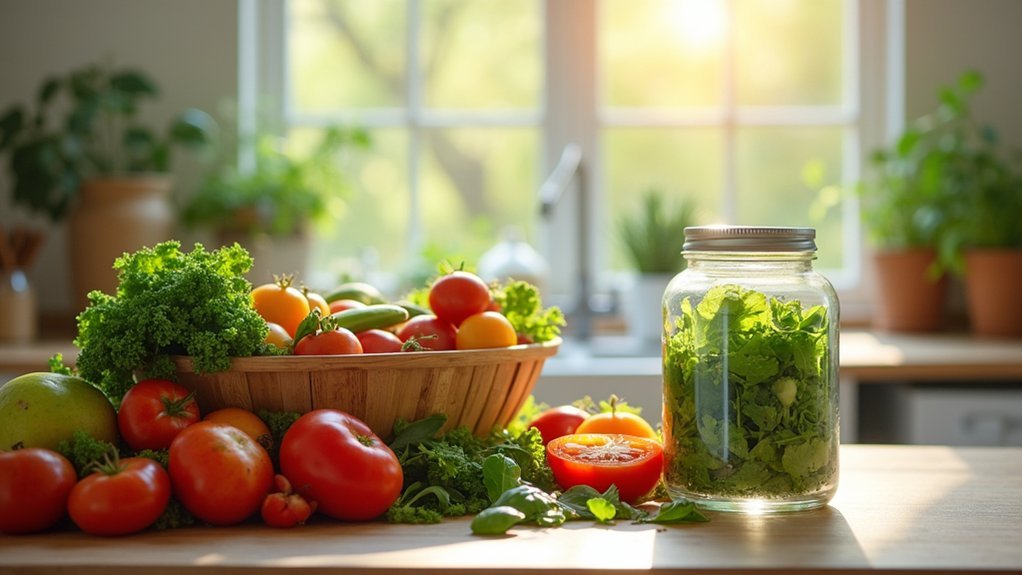



Leave a Reply